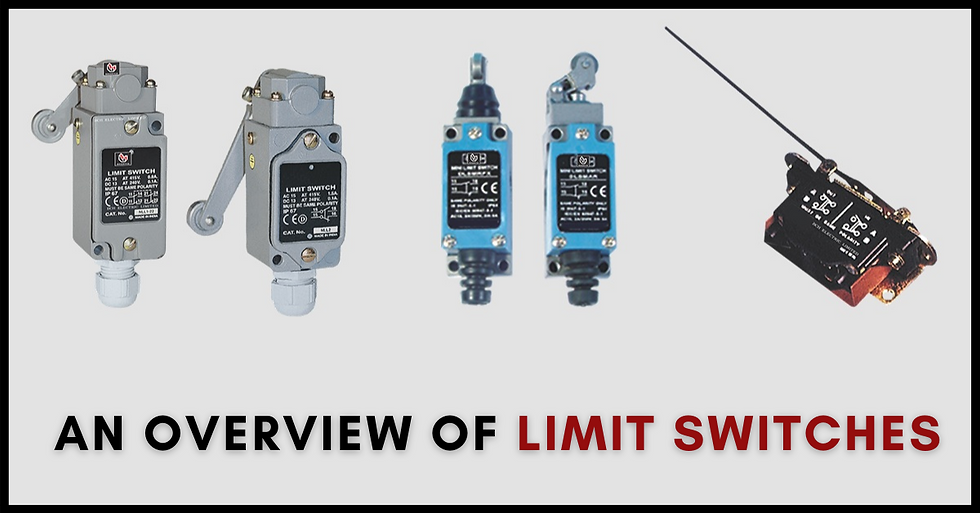An Overview Of Limit Switches: Meaning, Applications, Advantages, And Disadvantages
- diptipark412
- Jul 8, 2021
- 2 min read

Have you ever wondered why the refrigerator's interior light turns on and off? The limit switch causes it.
To understand what a limit switch is, imagine your toilet float valve. As the water in the tank fills, the float rises, and at a certain point, it is high enough to stop the flow of water. You can think of a limit switch as the electrical equivalent of a toilet float.
In light of this, let us get a bit more familiar with limit switches.
What Is A Limit Switch?
A limit switch is an electromechanical device activated by a physical force applied to it by an object. As soon as an object comes in contact with the limit switch and dislocates the actuator arm, it makes or breaks an electrical connection.
Limit switches are used for detecting the presence/absence, speed, position, range of motion, and travel limit of objects in industrial applications.
Typically, limit switches are used for controlling machine operations or as emergency switches.
What Are The Applications Of A Limit Switch?
Limit switches are used to prevent garage door openers from crashing into the lifting mechanisms when a motor lifts the door. As the door closes, the limit switch also deactivates the engine to prevent it from being slammed into the ground.
Dump trucks use limit switches with button actuators to detect when a pallet is fully down. The switch closes when the button is pressed, notifying the driver (via a light or alarm) that it is safe to drive.
The limit switch is usually installed in a machine system to activate forward or reverse processes or initiate, stop, slow down, or accelerate operations.
The other typical applications of a limit switch include:
In material handling applications, to indicate movement of materials from one platform to another.
Used for positioning in a fill operation
Used to control the lighting in control panels
Used for stopping a length of rod at the appropriate cutting point
Used for stopping a washing machine when its load is out of balance
What Are The Advantages Of A Limit Switch?
Limit switches have several inherent advantages. The following are among them:
Suitable for almost any industrial application
Optimally repeatable and highly accurate
Has the ability to switch loads with high inductance
They are low power consumption devices
Ideal for controlling multiple loads
They are robust and long-lasting
The installation process is easy and hassle-free
What Are The Limitations Of A Limit Switch?
A limit switch, like any other product, comes with certain disadvantages. They are listed below:
Due to their mechanical nature, they are most often used in equipment operating at relatively low speeds.
Since they are contact sensors, they must be in physical contact with the target to operate.
The response is slower than those of non-contact sensors like proximity sensors.
Their mechanical design makes them susceptible to mechanical wear and fatigue over time and will eventually need to be replaced.
Conclusion
We hope this blog on limit switches has given you a fundamental understanding of their applications, advantages, limitations, and how they work.
Comments